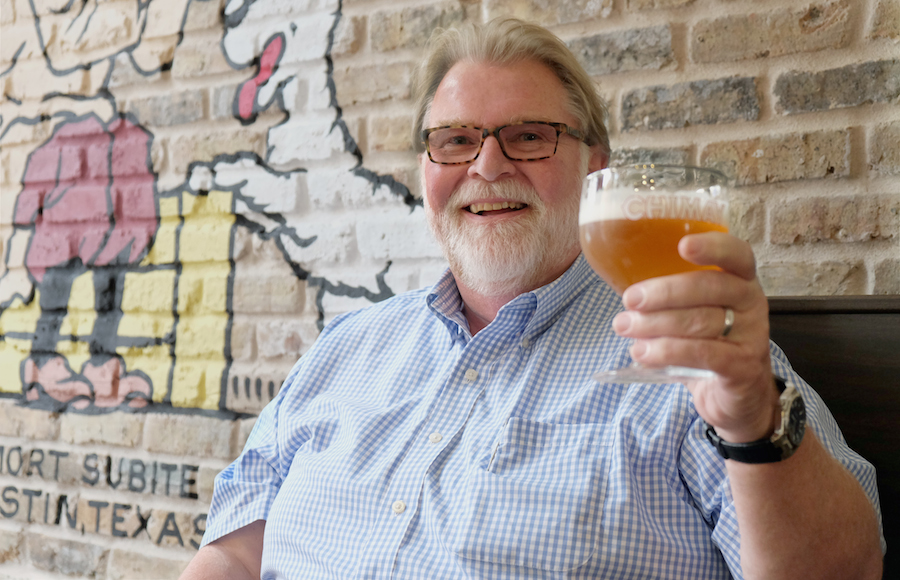Some breweries produce “abbey ales” while others make “trappist ales.” Is there a difference? Both imply beer made by monks in cloistered breweries — right? So are these terms synonymous?
Not at all. So explains Luc “Bobo” Van Mechelen, brand ambassador for Chimay Trappist Ales (produced at Scourmont Abbey of Hainaut, Belgium, pictured above). We recently sat down with Bobo to discuss the difference, as well as the history of trappist beer.
Beverage Dynamics: What’s the difference between trappist and abbey ales?
Bobo: There’s a backstory to this. Around 1997, the Belgium and Dutch trappist association decided that they wanted to protect their name. The way that, say, the Cognac region does for their Cognac. So they created a set of guidelines that you have to follow in order to use the term ‘trappist’ on your beer.
There are three key rules. A trappist beer must be brewed within the walls of the ministry. There can be no commercial investment. And a majority of the net proceeds must be given away.
At Chimay we give away 90% of our net proceeds. There are three laypeople who work for the ministry whose entire job is to decide where the money goes. They donate directly to causes like orphanages, or clean water projects in Africa, or local needs. There’s no middle person.
BD: So what’s an abbey ale?
Bobo: An abbey ale is typically a ministry that has allowed a brewery the use of their name on a beer. These are not beers made within the walls of the ministry. The Sierra Nevada Ovila Abbey beers, for instance, are not made within that abbey. These breweries will usually give a small percentage of the proceeds back to the ministry for the usage of the name.

BD: How can you tell what’s a trappist beer?
Bobo: There will be a little shield on the bottle that says ‘authentic trappist ale’. There are now 11 trappist breweries on the planet. One is in the U.S.: Spencer Trappist Brewery in Massachusetts.
Another thing to remember is that you will never see the image of a monk on the bottle of a real trappist beer. That is not allowed.
BD: Why do monks make beer?
Bobo: A lot of it dates back to when Napoleon had a disagreement with the pope in the early 19th century. Napoleon closed down a lot of religious orders in France, and those monks were forced to move north. They got stuck in Belgium and the Netherlands because, well, there’s not much more north than you can go in Europe.
Because there are no grapes in Belgium and the Netherlands, the monks could not make wine. Because they already had the knowledge and books for brewing, they began to make beer. Monks will drink table beer during meals.
Funny other historical story: Chimay used to make its ales using cascade hops. Why the American hops? To thank the U.S. soldiers who liberated the ministry during World War Two. But Chimay recently had to stop using cascade hops, because the American craft explosion made cascade hops too expensive. So we’re back to German, Czech and Belgium hops.
BD: What defines a trappist beer in terms of production?
Bobo: Consistency and authenticity. Monks buy the best ingredients and the most up-to-date technology. People have this image in their heads of monks still stirring vats of beer, but these are high-tech breweries. They’re not commercial, so the cost remains the same. There’s no bartering with them.
Chimay still uses water from wells they dug in 1850. We still make beer from that high-quality water. The house yeast dates back to 1948, because we lost all our old yeast during World War Two. And all the grains come from around the region from local farmers.
BD: How would you pair Chimay ales with food?
Bobo: The tripel I would pair with seafood. The Première, a dubel, I would pair with rabbit, meatloaf or meatballs. The Grande Réserve goes well with creamy sauces, and any gamey meats like deer, bore, or bison.
A lot of people also cook with Chimay ales. It has to do with the quality of the beer, like how a better wine will make for a better reduction.
Kyle Swartz is managing editor of Beverage Dynamics magazine. Reach him at kswartz@epgmediallc.com or on Twitter @kswartzz.





